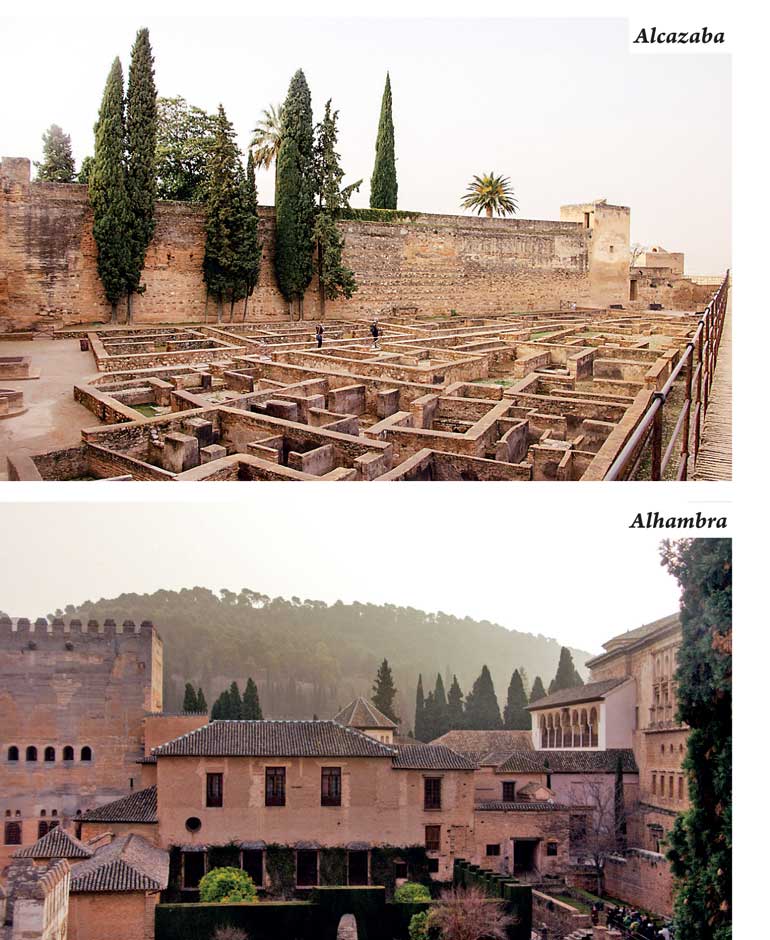Saturday Dec 14, 2024
Saturday Dec 14, 2024
Saturday, 5 August 2017 00:50 - - {{hitsCtrl.values.hits}}



 By Aysha Maryam Cassim
By Aysha Maryam Cassim
Curiosity brings an American writer to Southern Spain, during the spring of 1829. He makes a rambling expedition from Seville to Granada in company with a friend. In his book ‘Tales of Alhambra,’ Washington Irving compiles his accounts of his travels and adventurous companionship across Andalusia.
He tells us how he wandered the Sierras, elevated their sunburnt summits, indulged in al fresco siestas and traversed the voluptuous features of Spanish landscape. As the pages meet my eye, nostalgia hits me hard. Irving’s illustrious descriptions were so dear to my recollections of Alhambra.
Flipping through the book, each chapter transported me into the chivalric days of Granada where I felt like I was treading the scenes of an Arabian tale, surrounded with splendour and refinements of Moorish opulence and artistry.
“The Moors of Granada regarded the Alhambra as a miracle of art, and had a tradition that the king who founded it dealt in magic, or at least in alchemy, by means whereof he procured the immense sums of gold expended in its erection” – ‘Tales of Alhambra,’ Washington Irving
He is known in Arabian history as Mohamed Abu Alhamar, the founder of the Alhambra. During his reign, prosperity and abundance prevailed in this beautiful Andalusian city, its gates were thronged with commerce, and its warehouses filled with luxuries and merchandise of every clime and country.
Unravelling the mystery and magic of a Moorish Fortress
I spent three days in Granada discovering its magic and mystery from Albayzin to Alhambra. I dedicated the last day of my sojourn to discover the glory of Granada – Alhambra. Sheer numbers of people flock to visit this terrestrial paradise every season.
For last minute travellers or summer tourists, it is a remarkably challenging to buy tickets and plan your visit within a day. Be at the ticket counter at least two hours in advance. Only 6,600 tickets are sold per day and you don’t want to take the risk of being the last.
First reservation of the day starts at 8:30 am, but you must pass through the final ticket-scanning checkpoint prior to 2 p.m. A specific reservation is required within that general time slot to enter the Nasrid Palaces. For online booking, visit ticket master on Alhambra’s official website.
Alhambra is a complex comprising Nasrid Palace, the Alcazaba and The Generalife. Make sure to keep your ticket throughout your excursion. You will need to show your ticket thrice as you move between different checkpoints.
Palacio de Carlos V
The imposing building that you see as you enter the historical complex is the Palace of Charles V, the Emperor of the Sacred Roman Empire. He chose Alhambra as the site to erect his palace in order to manifest the triumph of Christianity over Islam.
The renaissance palace features circular courtyards and two museums: on the ground floor is the Museo de la Alhambra and the upstairs is the Museo de Bellas Artes.
Alcazaba
We started our journey from Alcazaba. The Alcazaba is a military fortress built in the mid-13th century by the Sultan Alhamar, the founder of the Nasrid dynasty.
Within the inner wall of the Alcazaba, you’d find ‘Place of Arms,’ an open ground devoted to military parades and to establish the defensive strategy when battles were to be fought. From the top of the Watch Tower (Torre de la Vela), you can gaze across El Albaicin, against the cloudless azure of a Southern sky.
Palacio de Nazares – Nazareth’s Palace
The royal abode of Nazareth has to be the most elegant edifice in Alhambra. Three palaces form this enclosure: the Mexuar, the Palace of Comares and the Palace of the Lions.
Alhambra Citadel is equipped with a clever network of water channels, which runs through the veins of the Palaces and Gardens. The fountain that stands in the centre of Patios de Liones is said to be the most emblematic. The 12 lions who encircle the alabaster basin, spout water into the channels. The stream flows through the courtyard symbolising the four rivers of paradise, depicting the heavenly oasis of Islam. In the interior of the halls, you’ll find traces and inscriptions, which fondly boasts the power, permanence of the last Hispanic-Arab governors of Al Andalus.
Under the arcades of the marble courtyards are emblazoned escutcheons of Moslem Kings and Mohammedan engravings. The arches in the halls are encrusted with vibrant mosaics of azulejos and Arabic calligraphy. The ceilings wrought in fretwork are delicately gilded and painted with brilliant colours. The pillars are curiously carved and ornamented, imitating the graceful taste of Arab artisans.
The Court of the Myrtles
The elongated reflection pool at the Court of the Myrtles attract a lot of eyes towards its architectural and aesthetic beauty. Its captivating mirror effect, geometrically projects the surrounding structures on the pristine pond, amplifying the grandeur of the palace.
The Court of the Myrtles takes its name from the dense bushes of Myrtle plants (mirth), which grow on the side of the pond. During the spring, the mirth flowers emanate a delicate scent.
Jardines de
Alhambra – The Generalife
The Generalife is a romantic retreat found in the vicinity of Alhambra. Built between the 12th and 14th centuries, The Generalife was designed as a villa for the Muslim royalty. It was the summer palace of the Moorish Kings, to which they resorted during the sultry months to enjoy some breeze in the outdoors.
The decorated garden is embroidered with perpetual verdure. There are orchards, pleasant little meadows and citrus groves where you can halt for a while to have a snack under the shade of an olive tree listening to the rhythm of gushing water fountains.